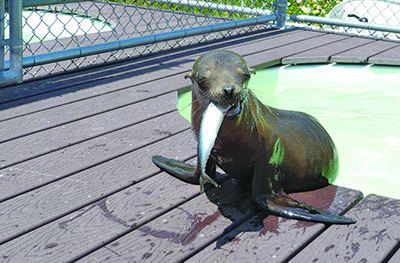By Raiza Giorgi
publisher@santaynezvalleystar.com
The California Fish and Game Commission will be holding a remote emergency meeting on April 9, to discuss the action to delay, suspend or restrict sport or recreational fishing if such action is necessary to protect against the threat from COVID-19.
The CFGC contends in their agenda packet that with recreational fishing people regularly travel to fish, and congregate in parking lots, near waterways, on trails and access paths, on boat ramps, and in other areas, taking advantage of the newly opened fishing seasons which start in April.
The Star reached out to the Santa Barbara County Parks department to see if there would be any impacts or closures at Lake Cachuma or other local fishing spots, and until the state makes a decision the park won’t know what that will be.
“Similar to the Stay at Home orders from the Governor there could be some exceptions or restrictions for different activities like shore fishing. Should all rec and sport fishing suspend, then yes we will be impacted at Cachuma as will our visitors,” said Jeff Lindgren, County Parks Superintendent.
Travel and potential concentration of fishers at “choke points” where it may not be possible to maintain six feet of separation (e.g., launch ramps, parking lots, etc.) have the potential to increase the spread of COVID-19. In addition, the packet states when traveling for a fishing trip, a fisher has the potential to travel to remote, small towns, often stopping at gas stations or convenience marts, tackle shops, fast food and other restaurants, marinas or boat launches, and/or hotels/motels. The travel can lead to inadvertent transmission of the virus to the local business attendants or employees, even if the fisher is asymptomatic.
In the letters to the commission a Kern River Fly Shop store owner contended that two people were waiting for him outside his shop, even though he had been closed for 10 days. He asked where they were from and they replied from Los Angeles, and he told them to go home.
The April 25, 2020 inland trout fishery opening date across 36 counties in California including San Luis Obispo County, represents an annual event that typically draws a high tourism influx several counties in the Sierra District.
More than 1.6 million sport fishers in California could be directly affected by the proposed emergency action for limited periods of time. Approximately 46 percent (about 753,000) of sport fishers fish in the marine environment. Many saltwater fishers also fish in freshwater environments, such that about 81 percent (or 1.3 million individuals) pursue freshwater fish; of these freshwater or inland fishers, nearly 60 percent (or about 782,000) pursue trout among other popular species, such as bass (U.S. Fish and Wildlife Service, California Report, 2014; CDFW 2019 License and Revenue Branch License Statistics).
Fiscal impacts if they decide to restrict fishing activities could potentially hurt their revenues for the 2020-21 fiscal year as the grants CFGC receives is based on federal excise tax on sales of sport fishing tackle and motorboat fuels.
Each state in the country receives federal grant money from the Sport Fish Restoration Act (SFRA). Grant amounts are based on 60 percent of sport fish license sales (number of paid licensed fishers in California in proportion to national total) and 40 percent land area (includes inland and coastal water area). A tiered system is then used to allocate grants to the states, according to the agenda packet.
In comments submitted to the commission come in, there have been some in favor of the restrictions and others questioning why.
“We see no recreational activity targeted for blanket prohibitions. Why fishing? California State Parks, for example, has been working with county health agencies to tailor park access restrictions based on local circumstances,” wrote George L. Osborn on behalf of his clients the Coastside Fishing Club, as well as CCA‐CAL and the American Sportfishing Association.
“Recreation is important for the mental and physical health of Californians. Moreover, for some anglers in these troubling times, sport caught fish are a matter of subsistence. The Commission should not unnecessarily interfere with otherwise safe forms of recreation, especially one that simultaneously serves as a food source,” Osborn added.
With the exception of closed parks, non-campground outdoor areas of parks, including trails and beaches, remain open. There are no Santa Barbara County parks/beaches on the list at the moment. Day-use restrooms also remain open, and visitors are advise to bring soap for handwashing and to use alcohol-based sanitizers when water is not available,” according to the California State Parks website.
To participate in the webinar visit https://cawildlife.webex.com/cawildlife/j.php?MTID=m6435b7aec2cf1a5f67dd5f4cd6f4a18c or Participate via Teleconference by calling (877) 402-9753 or (636) 651-3141; access code 832 4310.
The public is encouraged to comment on any agenda item. Submit written comments by 5 p.m. on April 8, and e-mail to fgc@fgc.ca.gov, or speakers will be called one at a time, via webinar first and then on the phone.






